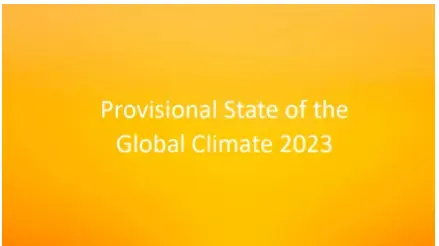Tuesday, 26th March 2024
V. Senthil Balaji Case
In News: AAP leaders affirm Mr. Kejriwal's tenure as Delhi's Chief Minister despite his custody until March 28, while queries arise over his eligibility for public office, citing prior court rulings on constitutional norms.
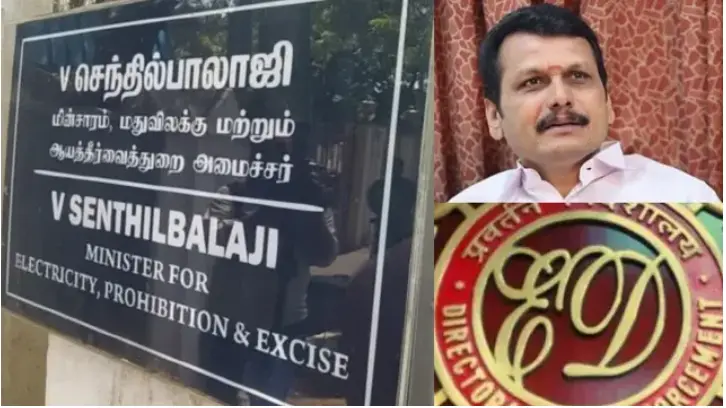
Ramachandran v. V. Senthil Balaji: Case Overview
Background of the Case
- V. Senthil Balaji, a former Tamil Nadu Electricity Minister, faced arrest by the Enforcement Directorate (ED) on money-laundering charges in the previous year.
- Despite being in judicial custody, Balaji continued to hold the position of State Minister without portfolio.
Madras High Court Proceedings
- The Madras High Court deliberated on whether a Minister accused of a "financial scandal" should forfeit the right to hold public office demanding a high degree of morality.
- Arguments focused on whether being in judicial custody rendered him unfit to serve as a Minister and if he had incapacitated himself from fulfilling his duties as a public servant.
- Reference was made to a 2014 Supreme Court Constitution Bench judgment in Manoj Narula v. Union of India, emphasizing constitutional morality, good governance, and upholding the moral standards associated with public office.
Key Points from Madras High Court Verdict
- The judgment underscored the practical challenges of being a Minister while in custody, highlighting the inability to access department files without violating the oath of office.
- The court questioned the appropriateness of receiving a salary from the State treasury while occupying a public office without fulfilling associated duties.
- While Balaji didn't face disqualification as a Member of the Legislative Assembly (MLA) under the Representation of People Act 1951, concerns centered more on public or constitutional morality.
- The court emphasized the public's legitimate expectation for individuals in power to uphold high moral standards and described the Chief Minister's role as being "the repository of the people's faith."
- Political pressures were deemed insufficient to override considerations of public morality, the imperative of good governance, and adherence to constitutional norms.
Source: TH
India-Bhutan Relationship
In News: On March 22, 2024, Prime Minister Narendra Modi touched down in Paro, Bhutan for a 24-hour State visit.
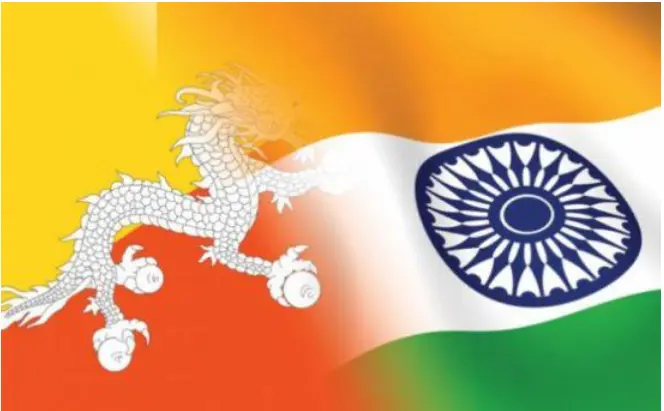
India – Bhutan Bilateral Relationship
Establishment of Diplomatic Relations
- India and Bhutan enjoy strong bilateral relations founded on mutual trust, goodwill, and understanding, with formal diplomatic ties established in 1968.
- The Treaty of Friendship and Cooperation, initially signed in 1949 and renewed in 2007, forms the basic framework of their relations.
Trade and Economic Ties
- The India-Bhutan Agreement on Trade, Commerce, and Transit was first signed in 1972, facilitating a free trade regime between the two nations.
- India stands as Bhutan's primary trade partner, with merchandise trade almost tripling since 2014, accounting for about 80% of Bhutan's overall trade.
Cultural and Buddhist Links
- Cultural and religious ties are strengthened by the pilgrimage of Bhutanese to various Buddhist sites in India.
- In celebration of the 50th anniversary of diplomatic relations, the Government of India sponsored a visit by Bhutanese Buddhist monks to significant Indian Buddhist sites.
Hydropower Cooperation
- Hydro-power cooperation serves as a vital component of economic collaboration, contributing significantly to Bhutan's socio-economic development.
- Operational hydro-electric projects, along with ongoing cooperation under bilateral agreements, demonstrate the mutual benefits derived from this collaboration.
New Areas of Cooperation
- Collaboration extends into new domains such as digital initiatives like RuPay and BHIM app, as well as space cooperation, exemplified by the launch of the India-Bhutan SAT.
- Recent developments include the inauguration of a Ground Earth Station during the visit of the Chairman of ISRO in March 2023.
Indian Workforce in Bhutan
- Approximately 50,000 Indian citizens contribute to Bhutan's workforce, particularly in sectors like construction, education, and technical consultancy.
- The presence of Indian daily-wage workers further underscores the close economic ties between the two nations.
Educational, Cultural Cooperation, and People-to-People Exchanges
- Educational and cultural cooperation thrives, with India annually offering over 950 scholarships to Bhutanese students across various disciplines.
- Initiatives like the Nehru Wangchuck Scholarship Scheme and ICCR Scholarships further facilitate educational exchanges between the two countries.
PM Modi's State Visit to Bhutan
- Prime Minister Narendra Modi embarked on a 24-hour State visit to Bhutan on March 22, 2024, marking his first visit since being awarded Bhutan's highest civilian honor, the Order of the Druk Gyalpo in 2021.
- The visit underscores Modi's commitment to strengthening India-Bhutan ties, with the award presentation scheduled during the visit.
Source: TH
Global Methane Tracker 2024
In News: According to the International Energy Agency’s Global Methane Tracker 2024, methane emissions from fuel usage in 2023 were close to reaching their peak level historically, showing a marginal rise compared to 2022.

Global Methane Tracker 2024 Highlights
Overview of Methane Emissions
- In 2023, methane emissions from fossil fuels totalled nearly 120 million tonnes (Mt), with an additional 10 Mt contributed by bioenergy, remaining constant since 2019.
- Major methane emissions events surged by over 50% in 2023 compared to 2022, including more than 5 million metric tons from significant fossil fuel leaks, notably a well blowout in Kazakhstan lasting over 200 days.
Top Emitting Countries
- Nearly 70% of methane emissions from fossil fuels are attributed to the top 10 emitting countries, with the United States leading in oil and gas emissions, followed closely by Russia, and China leading in coal sector emissions.
Importance of Methane Emissions Reduction
- Cutting methane emissions from fossil fuels by 75% by 2030 is crucial for limiting global warming to 1.5 °C, requiring an estimated USD 170 billion in spending, less than 5% of the industry's 2023 income.
- Approximately 40% of fossil fuel emissions in 2023 could have been avoided at no net cost.
Understanding Methane
- Methane is the simplest hydrocarbon composed of one carbon atom and four hydrogen atoms (CH4), serving as the primary component of natural gas.
- It ranks as the second most important greenhouse gas (GHG) after carbon dioxide (CO2), with a 20-year global warming potential (GWP) of 84, contributing significantly to global warming.
Major Sources of Methane Emission
- Natural sources, agricultural activities, combustion, and industrial processes are significant contributors to methane emissions, including wetlands, paddy fields, livestock, fossil fuel burning, biomass burning, and industrial activities like landfills and wastewater treatment.
Initiatives to Tackle Methane Emissions
- Initiatives such as Harit Dhara (HD), BS VI Emission Norms, National Action Plan on Climate Change (NAPCC) in India, and global efforts like Methane Alert and Response System (MARS), Global Methane Pledge, Global Methane Initiative (GMI), and MethaneSAT aim to mitigate methane emissions globally.
Global Methane Pledge
- Launched at UNFCCC COP26, the Global Methane Pledge aims for a 30% reduction in global methane emissions from 2020 levels by 2030, led by the US and the EU, with 111 participating countries.
- India has chosen not to sign the Pledge citing concerns over the focus shift from CO2 to methane, impact on agricultural livelihoods, and trade implications due to its significant role in rice production.
Way Forward
- Encouraging sustainable agricultural practices, implementing methane capture technologies, promoting rice cultivation techniques like System of Rice Intensification (SRI) and Direct Seeded Rice (DSR), and fostering biogas production from organic waste are key strategies to mitigate methane emissions.
|
UPSC Previous Year Questions Prelims (2019) Q. Which of the following statements is/are correct about the deposits of ‘methane hydrate’?
Select the correct answer using the code given below. (a) 1 and 2 only Ans: (d) Mains (2018) Q. “Access to affordable, reliable, sustainable and modern energy is the sine qua non to achieve Sustainable Development Goals (SDGs)”. Comment on the progress made in India in this regard. |
Source: DTE
Bond Yield
In News: In a recent development, State governments have successfully raised an unprecedented amount of Rs 50,206 crore through the auction of State Development Loan (SDL) Bonds.
Understanding Bonds
Definition and Types
- Bonds serve as instruments to borrow money, functioning similarly to IOUs between parties.
- They can be issued by governments or companies to raise funds, with government bonds considered among the safest investments due to sovereign guarantees.
- Types of government bonds include Treasury Bills (T-bills), Cash Management Bills (CMBs), Dated G-Secs, and State Development Loans (SDLs).
Bond Yields
- Bond yield refers to the effective rate of return earned from a bond, fluctuating with the bond's price.
- Bonds consist of a face value, coupon payment, and coupon rate, with yields representing investors' rewards for holding bonds over a specific period.
- The yield curve graphically represents interest rates on debt for various maturities and serves as an indicator of economic conditions.
RBI's Management of Bond Yields
- The Reserve Bank of India (RBI) employs Open Market Operations (OMOs) to regulate bond yields and monetary conditions.
- Selling G-secs absorbs liquidity and raises yields to curb inflation, while buying back G-secs injects funds to stimulate economic activity.
- Additional monetary policy tools such as the repo rate, cash reserve ratio, and statutory liquidity ratio complement OMOs in managing bond yields.
Factors Influencing the Yield Curve
- Market demand and bond prices influence yields, with higher demand driving bond prices up and yields down.
- Yields adjust to align with the economy's interest rates, with bonds priced higher or lower to match prevailing rates.
- Analogy: Bond yield behaves like a seesaw, tilting towards either the bond's yield or the economy's interest rate side based on relative rates.
Impact of Bond Yield Hardening
- Losses to banks and mutual funds occur due to mark-to-market losses as bond prices fall with rising yields.
- Increased government borrowing costs raise interest rates on fresh borrowings, affecting the economy's borrowing costs.
- Corporates may need to raise bond interest rates to attract investors amid higher market yields, potentially impacting profitability and investments.
- Rising bond yields increase the opportunity cost of investing in equities, potentially leading to decreased demand for stocks and equity market declines.
|
UPSC Previous Year Questions Prelims (2020) Q. In the context of the Indian economy, non-financial debt includes which of the following?
Select the correct answer using the code given below: (a) 1 only Ans: (d) Prelims (2018) Q.2 Consider the following statements:
Which of the statements given above is/are correct? (a) 1 and 2 only Ans: (c) Prelims (2013) Q.3 In the context of Indian economy, ‘Open Market Operations’ refers to (a) borrowing by scheduled banks from the RBI Ans: (c) |
Source: TH
Captive Elephant (Transfer or Transport) Rules, 2024
In News: The Ministry of Environment, Forest, and Climate Change (MoEF&CC) has issued the Captive Elephant (Transfer or Transport) Rules, 2024, aiming to ease the requirements for transferring elephants within or across states.
Transfer of Captive Elephants: Rules and Procedures
- Circumstances for Transfer:
- Transfer may be considered when:
- The owner is incapable of adequately caring for the elephant's welfare.
- Better care can be provided to the elephant in the new circumstances.
- The Chief Wildlife Warden deems it necessary for the elephant's well-being based on specific circumstances.
- Transfer may be considered when:
- Procedure Within the State:
- Before transferring within a state:
- The elephant's health must be confirmed by a veterinarian.
- The suitability of both current and prospective habitats must be assessed by the Deputy Conservator of Forests.
- The Chief Wildlife Warden has the authority to approve or reject the transfer based on these evaluations.
- Before transferring within a state:
- Procedure Outside the State:
- Similar conditions apply for transferring elephants outside a state.
- Additionally, the elephant's genetic profile must be registered with the MoEF&CC prior to transfer.
- Requirements for Elephant Transfer:
- The elephant must be accompanied by a mahout and an elephant assistant.
- A health certificate from a veterinary practitioner confirming fitness for transport is mandatory.
- Transport should occur after completion of any required quarantine period for contagious diseases.
- Proper feeding and watering arrangements must be made during transport.
- Tranquillisers or sedatives may be used as needed to control nervous or temperamental elephants, as prescribed by a veterinary practitioner.
|
UPSC Previous Year Questions Prelims (2020) Q. With reference to Indian elephants, consider the following statements:
Which of the statements given above is/are correct? (a) 1 and 2 only Ans: (a) |
Source: TH
Paytm Gets Third-party Licence from NPCI
In News: One97 Communications Ltd, the owner of Paytm, has received approval from the National Payments Corporation of India (NPCI) to operate as a Third-Party Application Provider (TPAP) under the multi-bank model for Unified Payments Interface (UPI).
Roles and Entities in India's Payment System Ecosystem
- Payment System Provider (PSP) Banks for Paytm:
- Axis Bank, HDFC Bank, State Bank of India, and YES Bank have been appointed as PSP banks to facilitate transactions for Paytm.
- Paytm previously operated under its own payments bank license but faced regulatory restrictions from the RBI due to non-compliance.
- Third-Party App Providers (TPAPs) in UPI Payments:
- TPAPs are entities that facilitate UPI payments by connecting customers and merchants through applications or platforms.
- They act as intermediaries, ensuring smooth transactions within the UPI ecosystem and handling a significant volume of transactions daily.
- National Payments Corporation of India (NPCI):
- NPCI operates as a not-for-profit entity established through collaboration between the RBI and the Indian Banks' Association (IBA) under the Payment and Settlement Systems Act, 2007.
- It aims to enhance India's payment and settlement infrastructure by providing physical and electronic payment solutions to the banking sector.
- NPCI leverages technology to improve operational efficiency and expand accessibility to payment systems across the country.
Source: TOI
World Young Rheumatic Disease Day
In News: WORD Day, observed on 18th March, highlights the significance of early detection and raising awareness about rheumatic diseases among young individuals.
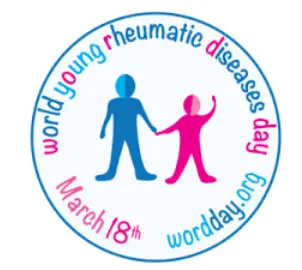
Understanding Juvenile Idiopathic Arthritis (JIA) and its Impact
- Definition of Rheumatic Disease:
- Rheumatic disease encompasses arthritis and various conditions affecting joints, tendons, muscles, ligaments, bones, and connective tissues.
- Prevalence and Nature of JIA:
- Juvenile Idiopathic Arthritis (JIA) is the most common paediatric rheumatic disorder.
- It includes different inflammatory arthritis subtypes, posing significant health challenges among children globally.
- Global prevalence ranges from 0.07 to 4 per 1,000 children, varying across regions.
- Symptoms and Functional Limitations:
- Children with JIA often experience joint pain, swelling, and functional limitations.
- Symptoms are typically more pronounced in the morning or after periods of rest.
- JIA can affect various joints, leading to diverse functional limitations like impaired mobility and difficulty with daily activities.
- Treatment Options:
- Therapeutic options for JIA include steroids, disease-modifying antirheumatic drugs (DMARDs), and newer biologic drugs.
- These treatments aim to modulate the immune system and manage symptoms effectively.
- Challenges in Diagnosis and Awareness:
- Challenges in managing JIA include limited awareness and delayed diagnosis.
- Enhanced community awareness and streamlined referral mechanisms are crucial for addressing these challenges.
- Importance of Early Intervention:
- Early intervention is vital in managing JIA effectively.
- Studies emphasize the significance of timely referrals to paediatric rheumatologists for optimal outcomes.
Source: TH
Preventive Detention in India
In News: The Supreme Court overturned a Telangana High Court decision, emphasizing that preventive detention, seen as draconian, should be prevented if exercised arbitrarily or routinely.
Understanding Preventive Detention in India
- Preventive detention involves holding an individual in custody without a trial or conviction by a court, with the aim of preventing future offenses rather than punishing past ones.
- Governments enact preventive detention laws to uphold public safety and preserve social order.
- Constitutional provisions, particularly Article 22 of the Indian Constitution, safeguard individuals' rights when arrested or detained.
- Article 22(4) stipulates that preventive detention cannot exceed three months unless an Advisory Board justifies an extension.
- Detainees must be informed of the grounds for their detention, although exceptions may occur if it is deemed in the public interest.
- Detaining authorities must provide detainees with the earliest opportunity to contest their detention.
- Parliament has exclusive authority to enact preventive detention laws related to defense, foreign affairs, or India's security.
- Both Parliament and State Legislatures can enact laws for preventive detention concerning public order or essential community services.
- India's laws allowing preventive detention include the National Security Act (NSA) of 1980, the Unlawful Activities (Prevention) Act (UAPA) of 1967, and state-specific laws like the Maintenance of Internal Security Act (MISA) and Public Safety Acts (PSA).
- These laws empower authorities to detain individuals for up to 12 months without formal charges, with detention orders subject to periodic review by an advisory board.
Source: IE
Electoral Trusts
In News: The recently disclosed roster of corporate donors to political parties via electoral bonds is currently under scrutiny, despite the fact that many of these entities have been regular contributors, dispensing substantial amounts to political parties via electoral trusts.
Overview of Electoral Trusts
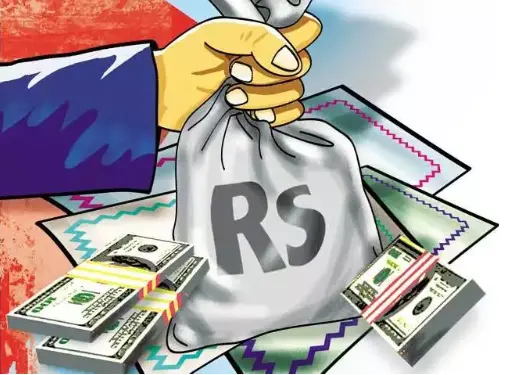
- Purpose:
- Electoral trusts are established by companies to manage and distribute contributions received from other companies and individuals to political parties.
- Eligibility:
- Only companies registered under section 25 of the Companies Act, 1956, are eligible to apply for approval as electoral trusts.
- Naming:
- Currently, the names of electoral trusts do not reveal the identities of the companies or groups that established them.
- Contributors:
- Who can contribute:
- Indian citizens
- Companies registered in India
- Associations of persons (Indian residents)
- Who cannot contribute:
- Non-Indian citizens
- Other approved electoral trusts
- Contributors without PAN
- NRIs without a passport number
- Who can contribute:
- Allocation of Funds:
- Electoral trusts can allocate a maximum of 5 percent of total funds collected during a financial year for administrative expenses.
- The remaining 95 percent, including any surplus from the previous financial year, must be distributed to eligible political parties.
- Governing Laws/Rules:
- The Central Government amended the Income Tax Rules, 1962, on January 31, 2013, to include Rule 17CA, outlining the functions of electoral trusts approved by the Central Bureau of Direct Taxes (CBDT).
- The Central Government introduced 'The Electoral Trusts Scheme, 2013,' specifying the eligibility criteria, registration procedure, and format for registration of electoral trusts.
Source: ET
Right Whales
In News: A recent study suggests that female right whales may remain unable to breed following entanglement in fishing gear.

Overview of Right Whales
- Physical Characteristics:
- Right whales belong to the family Balaenidae and are characterized by stout bodies and enormous heads, which can measure one-quarter to one-third of their total body length.
- Despite genetic differences and varying conservation statuses, they exhibit similar external appearances.
- Historical Significance:
- From the 17th to the 19th century, right whales were extensively hunted for their oil and strong, elastic baleen.
- Their name originated from being considered the most profitable whale species to hunt due to the economic value of their products.
- Size and Feeding Habits:
- Adult right whales typically measure between 45 and 52 feet in length and can weigh up to 70 tons.
- They feed by swimming slowly and using baleen to consume zooplankton, particularly small, shrimp-like crustaceans.
- Conservation Status:
- Uncontrolled hunting nearly drove right whales to extinction.
- The International Union for Conservation of Nature and Natural Resources (IUCN) classifies two of the four species as endangered.
- International agreements have provided complete protection to right whales since 1946.
- While the bowhead and southern right whale populations are relatively stable, the northern right whales are rare, with only a few hundred individuals in the North Atlantic and slightly more in the North Pacific.
- The North Pacific right whale is categorized as endangered, while the North Atlantic right whale is classified as critically endangered by the IUCN.
Source: TH
Practical Strategies for Tuberculosis Control
In News: World TB Day, observed on March 24, marks the anniversary of Dr. Robert Koch's identification of Mycobacterium tuberculosis, the bacterium responsible for causing tuberculosis, in 1882.
Background
- Despite significant discoveries in the treatment of tuberculosis (TB) dating back to streptomycin in 1943 and subsequent antibiotics like isoniazid and rifampicin, the battle against this pathogen remains unresolved, facing numerous challenges.
Key Points
- The theme for World TB Day 2024, 'Yes! We can end TB!', highlights the potential to eradicate TB through existing disease control measures, infrastructure, training, and political commitment.
- However, various forms of TB, including drug-resistant strains, continue to pose significant challenges, akin to trying to contain sand slipping through one's fingers.
- Each day, approximately 3,500 individuals worldwide lose their lives to TB, with around 30,000 new infections reported, India alone accounting for 27% of global cases.
India's TB Situation
- India remains a hotspot for TB, despite ongoing efforts and adaptations in the TB control program since its inception in 1962, integrating evidence from various public health domains.
10-point Agenda Towards Ending TB
- Early Detection: Emphasizes the importance of prompt identification of TB symptoms and the necessity of compulsory screening for close contacts.
- Precise Treatment Categorization: Urges knowing the resistance status to tailor treatment regimens effectively.
- Treatment Adherence and Follow-up: Highlights the need for sustained treatment adherence and leveraging technology for monitoring compliance.
- Zero Mortality: Advocates for mitigating TB-related mortality across all forms of the disease.
- Controlling Drug Resistance: Addresses the man-made phenomenon of drug resistance and the need for better regulatory mechanisms.
- Assessing Drug-resistant TB Extent: Emphasizes the importance of data collection to inform control programs and resource allocation.
- Availability of Appropriate Medicines: Calls for addressing procurement challenges for DR-TB medications.
- Integration into Larger Health Systems: Stresses the need for strong referral networks to ensure comprehensive care.
- Dynamic Notification System: Calls for improvements in real-time TB data capture and sharing.
- Population Mobility and Migration: Highlights the importance of ensuring portability of TB treatment within the country.
Conclusion
- The journey towards TB elimination in India necessitates a unified focus on person-centered care, addressing social determinants of health, and embracing innovation.
Source: AIR
Share the article
Get Latest Updates on Offers, Event dates, and free Mentorship sessions.

Get in touch with our Expert Academic Counsellors 👋
Frequently Asked Questions
UPSC Daily Current Affairs focuses on learning current events on a daily basis. An aspirant needs to study regular and updated information about current events, news, and relevant topics that are important for UPSC aspirants. It covers national and international affairs, government policies, socio-economic issues, science and technology advancements, and more.
UPSC Daily Current Affairs provides aspirants with a concise and comprehensive overview of the latest happenings and developments across various fields. It helps aspirants stay updated with current affairs and provides them with valuable insights and analysis, which are essential for answering questions in the UPSC examinations. It enhances their knowledge, analytical skills, and ability to connect current affairs with the UPSC syllabus.
UPSC Daily Current Affairs covers a wide range of topics, including politics, economics, science and technology, environment, social issues, governance, international relations, and more. It offers news summaries, in-depth analyses, editorials, opinion pieces, and relevant study materials. It also provides practice questions and quizzes to help aspirants test their understanding of current affairs.
Edukemy's UPSC Daily Current Affairs can be accessed through:
- UPSC Daily Current Affairs can be accessed through Current Affairs tab at the top of the Main Page of Edukemy.
- Edukemy Mobile app: The Daily Current Affairs can also be access through Edukemy Mobile App.
- Social media: Follow Edukemy’s official social media accounts or pages that provide UPSC Daily Current Affairs updates, including Facebook, Twitter, or Telegram channels.

